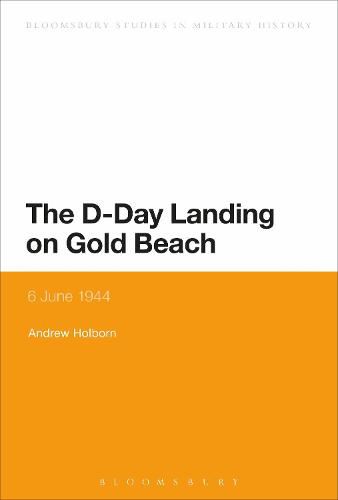Readings Newsletter
Become a Readings Member to make your shopping experience even easier.
Sign in or sign up for free!
You’re not far away from qualifying for FREE standard shipping within Australia
You’ve qualified for FREE standard shipping within Australia
The cart is loading…






The Normandy landings of 6 June 1944, across five sectors of the French coast - Utah, Omaha, Gold, Juno and Sword - constituted the largest amphibious invasion in history. This study analyses in depth the preparations and implementation of the D-Day landing on Gold Beach by XXX Corps. Historians have tended to dismiss the landing on Gold Beach as straightforward but the evidence points to a different reality. Armour supported the infantry landing and prior bombing was intended to weaken German defences; however, the bulk of the bombing landed too far inland, and many craft foundered in difficult conditions at sea. It was the tenacity of the assault units and the flexibility of the follow up units which enabled the Gold landing to secure the right flank of the British Army in Normandy. Using detailed primary evidence from The National Archives and the Imperial War Museum, this volume provides a substantial assessment of the background to the landing on Gold, and analyses the events of D-Day in the wider context of the Normandy Campaign.
$9.00 standard shipping within Australia
FREE standard shipping within Australia for orders over $100.00
Express & International shipping calculated at checkout
The Normandy landings of 6 June 1944, across five sectors of the French coast - Utah, Omaha, Gold, Juno and Sword - constituted the largest amphibious invasion in history. This study analyses in depth the preparations and implementation of the D-Day landing on Gold Beach by XXX Corps. Historians have tended to dismiss the landing on Gold Beach as straightforward but the evidence points to a different reality. Armour supported the infantry landing and prior bombing was intended to weaken German defences; however, the bulk of the bombing landed too far inland, and many craft foundered in difficult conditions at sea. It was the tenacity of the assault units and the flexibility of the follow up units which enabled the Gold landing to secure the right flank of the British Army in Normandy. Using detailed primary evidence from The National Archives and the Imperial War Museum, this volume provides a substantial assessment of the background to the landing on Gold, and analyses the events of D-Day in the wider context of the Normandy Campaign.